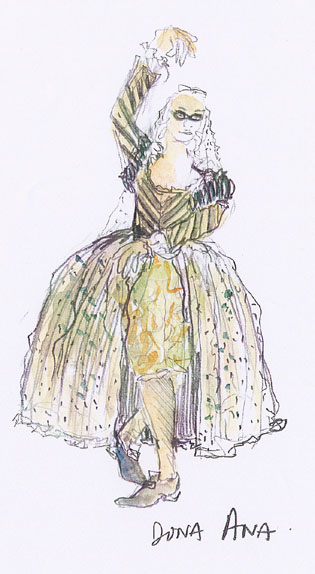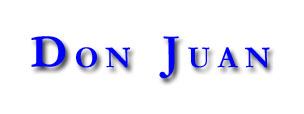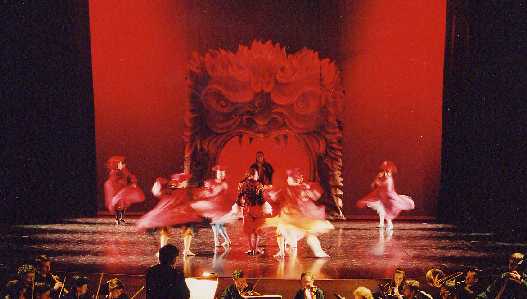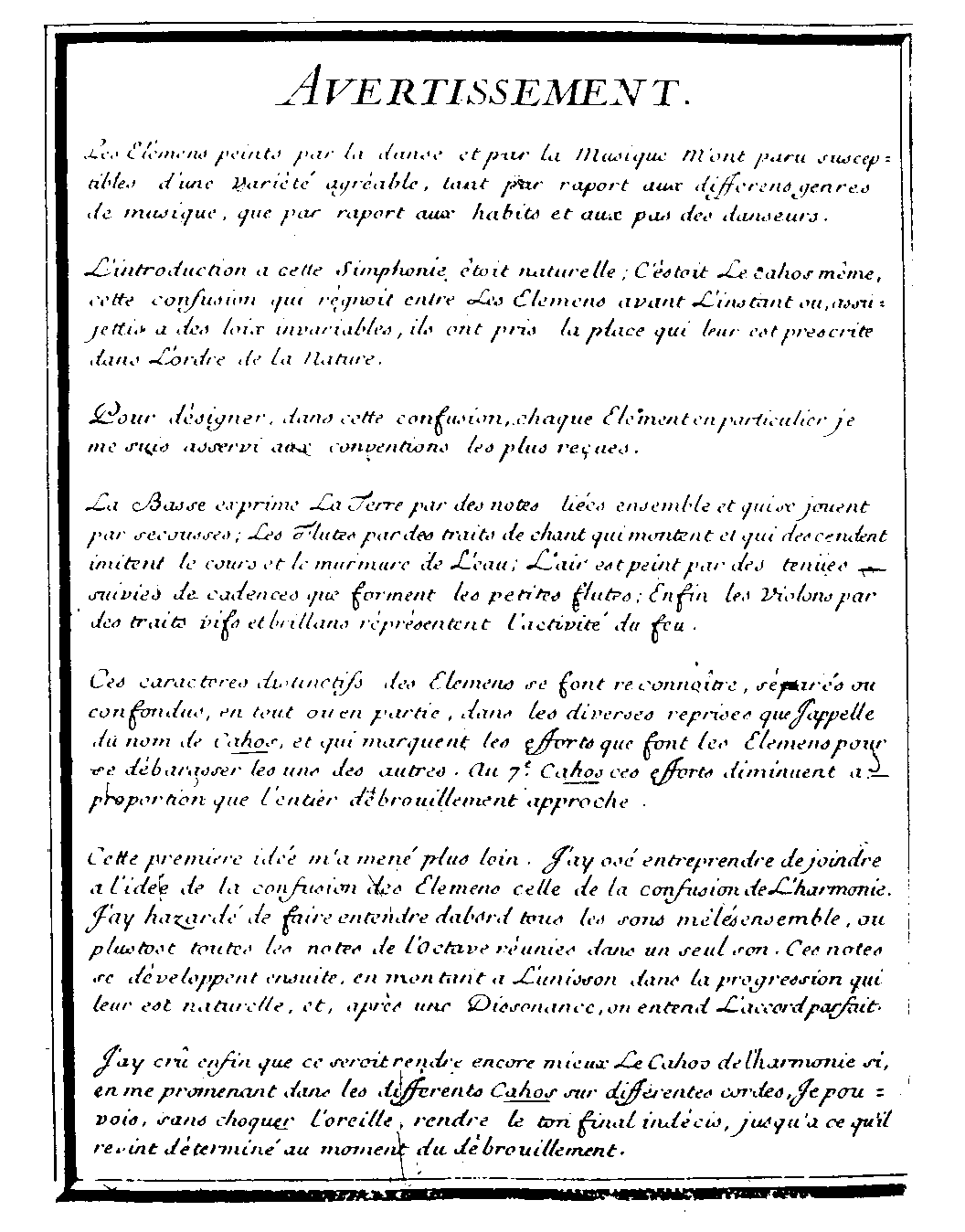
Home Page
L’Eventail
Exhibition Parcours Baroque
NEW
Le Ballet de l’Amour Malade
Saynètes des rues, des rivières et des bois
Prologue au Cabinet des Fées
Don Juan
Voyage en Europe
Carnaval ou la Fête à l’Envers
Les Caprices de la Danse
Ballet des Masques
Press Review
Links in Baroque Dance
L’EVENTAIL BAROQUE DANCE COMPANY
presents
Two ballets d’action for 10 dancers
Music by
| Jean-Féry Rebel | Les Elemens, 1737 |
| Christoph Willibald von Glück | Don Juan or le Festin de pierre, 1761 |
A creation by L’Eventail Baroque Dance Company
in residence at Espace Carpeaux in Courbevoie
Created on May 11, 2001 at the Théâtre Montansier in Versailles
| Design and choreography | Marie-Geneviève Massé |
| Costumes | Olivier Bériot |
| Production and lighting | Véronique Guidevaux |
|
Length of the performance: 1 hour and 15 minutes with intermission |
|
Presented in one evening, the two ballets “les Elemens” by Jean-Féry Rebel and “Don Juan or le Festin de pierre” by Christoph Willibald Glück, representing two major stages in this history of dance.
In the 18th century, the creation of both ballets was revolutionary: by the concept and the pieces, by the music and their choreography, now unfortunately lost. Magnificent subject of creation situated in the confines of a baroque period, they offer all the mobility and liberty renowned in important productions that punctuate art history.
First Part
Les Elemens, 1737
Music by Jean-Féry Rebel (1661-1747)
Choreography by Marie-Geneviève Massé
Ballet for 8 dancers
Les Elemens
The most famous ballet by Jean-Féry Rebel, “les Elemens” consists in an amazing opening - The Chaos - followed by nine dances on the theme of imitation of nature.
I - The Cahos
II - Loure I: Earth & Water
III - Chaconny: Fire
IV - Song: Air
V - Nightingales
VI - Loure II
VII - Tambourins I & II
VIII - Siciliano
IX - Rondeau: Air for Love
X - Caprice

During a magic night, a young man assists to a series of apparition: fairy characters, gods, goddesses, allegories of Fire, Water, Air and Love always present.
As if by magic, all these marvelous and colorful characters appear from depths of the night, coming back to life on the subtle and intoxicating musics by Jean-Féry Rebel.
Characters
Allegory of Love
Allegory of Dreams
The Young Man
Allegory of Air
Allegory of Fire
Allegory of Water
The Three Fates
Second Part
Don Juan ou le Festin de pierre, 1761
Music by Christoph Willibald von Gluck (1714-1787)
Choreography by Marie-Geneviève Massé
Ballet for 10 dancers
Following the revolution initiated with the
Symphonies chorégraphiques by Jean-Féry Rebel, Don Juan ou le Festin de pierre
by Gluck is the first ballet d’action or dramatic ballet.
It was created at the Burgtheater in Vienna on October 17, 1761.
This ballet in 3 acts was written in French by the choreographer Angiolini, dancing master at the court of Vienna and rival of Noverre. Gluck composed for Angiolini a very descriptive score where music is not just a simple background music, but becomes a complete element of ballet. This use of music, later known as ballet d’action, for the first time in ballet history will have a great influence on all music composers.

The Plot
Act 1
As in a small theatre of the Comedia dell’Arte, all the characters are set up for the comedy in advance: Pantalon, the greybeard married to the very young and very pretty Angelique and mocked by his maidservant, Toinette, will marry off his daughter, Elvire.
Elvire is helped by her two maidservants, Charlotte and Mathurine, who are finishing the preparations for her wedding in spite of the ill-timed presence of the smitten Pierrot, Charlotte’s “shadow.”
The noble Don Juan - followed by his valet, Sganarelle - readies to marry the virtuous Elvire. The marriage celebrations have hardly begun when the glorious Don Juan sets a wandering eye on Angelique while Charlotte and Mathurine also make him turn his head. Outraged, the very old Pantalon stops the wedding, making everyone leave, and provokes his son-in-law, Don Juan.
Act 2
Ignorant of the clash between Pantalon and Don Juan, the guests return to their celebrations. Slipping in among the guests to prepare her revenge, the beautiful Dona Ana is exposed by Don Juan as the murderer of his father, the commander.
The party is then once again interrupted by a loud knocking on the door. To everyone’s astonishment, the commander has come to ask Don Juan to repent for having trampled and defied his paternal authority and dishonouring his rank.
In a rebellious and disrespectful manner, Don Juan refuses. Then, accompanied by the now recalcitrant and terrified Sganarelle, Don Juan leaves for the cemetery to answer the call of the commander.
Act 3
At the cemetery, the commander opens the gates of hell where Don Juan is led to death, encircled and brought down by the menacing ghosts of his past.
Characters
Pantalon
Angélique
Toinette
Sganarelle
Don Juan
Elvire
Mathurine
Charlotte
Pierrot
Dona Ana
Jérôme Lourdais, Ouest France, August 27, 2001
Florence Loyez, Le Maine, August 27, 2001
[Back to top of page.] [Version française.]
Number of visitors
Copyright © L’Eventail 2004






